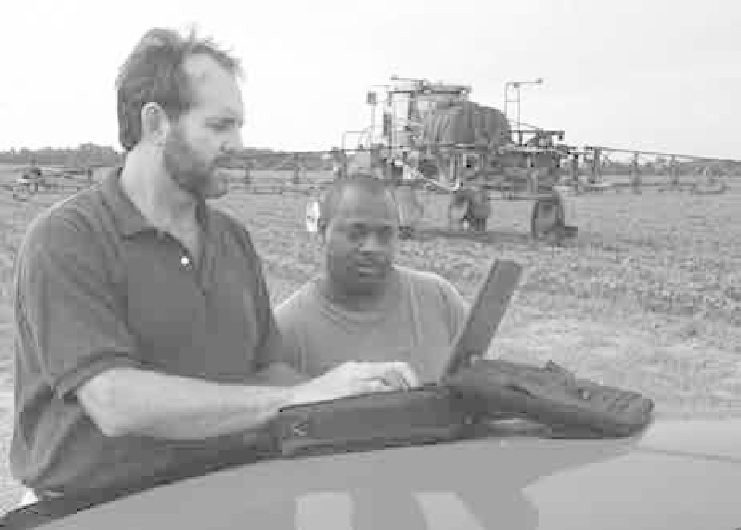Agriculture Reference
In-Depth Information
Plate 1.3
Input application
Advancements in technology by input suppliers contribute to productivity gains in the
production agriculture sector. Photo courtesy of USDA Natural Resources Conservation
Service
the manufacturer to the farm, and providing a set of services that insure productive use of
the inputs.
These distribution fi rms represent a very wide range of organizations. Sometimes, a major
national manufacturer owns the distribution fi rm. Memphis-based Helena Chemical
Company is an international company producing fertilizers, spray adjuvants, and specialty
products. Helena reaches farmers through its retail and wholesale locations throughout the
U.S. In other cases, the distributor is a franchise of a manufacturer. The local dealer network
of John Deere provides a good example. In still other cases, the distribution network is inde-
pendent of the manufacturing sector.
Local agricultural cooperatives are heavily involved in the distribution of inputs.
A
cooperative
is a member-owned, democratically controlled business from which the ben-
efi ts are received in proportion to use. Local farmers who are cooperative members buy and
sell products through the cooperative and thus, the cooperative is a distributor or agricultural
products and/or services.
Stores or chains that offer everything from pet food to tractor parts operate as a retail
business from which producers make purchases. Tractor supply provides a good example.
Given the very wide range of inputs that farmers use in their businesses, and given the
equally wide range of farmers involved in production agriculture, it comes as little surprise
that the distribution system involves such a wide range of organizations.

